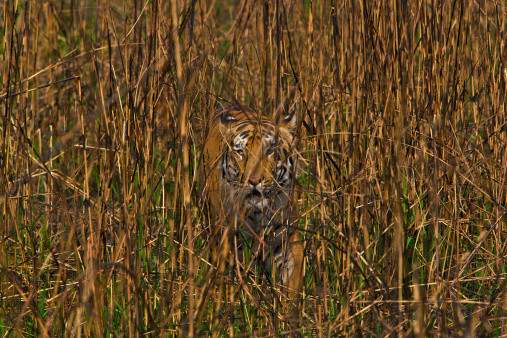Tip of a new iceberg for tigers: Poachers caught in India are wealthy and well educated
The poachers were well educated and organised, confirming the need for local initiatives to be established to counter them.
A gang of 11 poachers arrested in the well-known Bhadra Tiger Reserve in the Indian state of Karnataka was made up of engineers, environmental consultants, wealthy coffee planters and a leading member of the local Rifle Association. For wildlife charities, this is a worrying trend, as it suggests that even educated individuals are taking part in illegal hunting despite conservation activists' efforts to educate local communities about the threats to wildlife.
The arrest occurred on New Year's Eve after a group of conservationists - known as WildCat–C and working with the Wildlife Conservation Society - spotted the poachers operating on the fringe of the reserve and alerted the Park's rangers. They detained the poachers without violence, despite them being armed.
The group had shot and killed two Sambar deer, which are tigers' most important prey in the reserve. The animals' carcasses had been hidden among the trees, as the poachers planned to go and retrieve them discretely at a later date.
The eleven individuals have now been put in judicial custody for 15 days by a magistrate. They have been charged under various sections of the Indian Wildlife Protection Act of 1972, which carries fines and a potential prison time of three to seven years.
D V Girish of the Bhadra Wildlife Conservation Trust and WildCat-C, who led the operation with the Karnataka State Forest Department commented: "This may be the tip of a new iceberg. A new and ugly generation of wealthy, educated poachers appears to be emerging, to casually destroy the conservation gains achieved through decades of hard work by forest officials and conservationists in India."

The challenges of tiger protection
This particular group of poachers killed tigers' prey, they did not directly attack tigers. However, this can also threaten the feline's survival. Classified as endangered by the IUCN red list of threatened species, tigers are mostly poached for their parts - skins, bones, meat.
However in recent years, prey depletion and habitat loss have also become growing concerns. In particular, tigers are known to have substantial dietary requirements, and so they need a large and healthy prey base. However, they often end up competing with humans for these preys, which are under intense hunting pressure and so may not have enough to feed themselves.

In the last decade, the number of tigers has been rising steadily in Bhadra since 450 rural families that were living there were voluntary relocated in 2004 under a WCS and Indian Government program. Their presence in the forest prior to this date had led to a reduction in the number of tigers, because they hunted the same preys and started fires that reduced tigers' habitat.
By killing the two deer in the protected reserve, the poachers are endangering those efforts and weakening the revival of the tiger population in the Bhadra Tiger Reserve. As this case shows, education alone is not enough to stop poachers from conducting their illegal activities.
"This incident clearly shows the importance of nurturing local guardians for India's wildlife through their involvement in citizen science projects (...) such as the Wild Cat-C team, which is a beacon of hope" Dr Ullas Karanth, WCS-India Director for Science concluded.
© Copyright IBTimes 2025. All rights reserved.






















